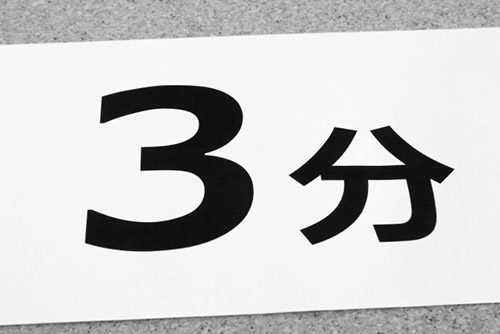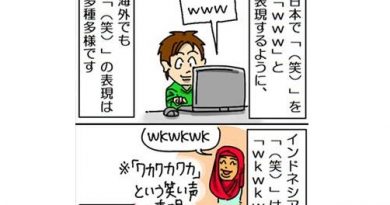How to write a presentation in Japanese
スピーチ – Presentation plays an important part in many subjects. In this post, Learn Japanese Daily will introduce to you the lesson: How to write a presentation in Japanese.
Contents
About スピーチ – Presentation
There are many forms of presentation for students in Japanese language schools, Senmon, universities in Japan. For example: short presentation, long presentation, presentation about research topics, group presentation, etc.
A simple presentation doesn’t require much in time or content. Especially, it is not necessary to have documents and illustrations in that presentation. It is called 一分間スピーチ (Ippunkan supiichi – 1 minute presentation), 三分間スピーチ (Sanpunkan supiichi – 3 minutes presentation), or 五分間スピーチ (Gofunkan supiichi – 5 minutes presentation), etc.
On the contrary, if you have to present a research topic, a graduate project, or a group discussion, the presentation requires a higher level of detail as well as the length of its content, the documents and illustrations.

The structure of a presentation – スピーチ
Regardless of the form, a good presentation includes the following sections: 序論 (Joron) – Introduction, 本文 (Honbun) – Body and 結論 (Ketsuron) – Conclusion.
You don’t need to apply this three-sections structure to your presentation all the time. You can also use the four-sections structure 起承転結 (Introduction – Development – Turn – Conclusion), the three-sections structure 結起承 (Conclusion – Introduction – Development), or the PREP structure.
The four-sections structure 起承転結 (Introduction – Development – Turn – Conclusion)
Introduction – 起: Introducing and attracting the listeners.
Development – 承: Explaining the content in detail.
Turn – 転: Emphasizing key points.
Conclusion – 結: Giving the conclusion. Clarifying the problem.
The three-sections structure 結起承 (Conclusion – Introduction – Development)
Conclusion – 結: Giving the conclusion first.
Introduction – 起: Getting to the point.
Development – 承: Giving arguments, explaining in detail.
The structure PREP
P = Point: Giving the conclusion (結論 – ketsuron)
R = Reason: Giving the reasons, bases(理由 – riyuu、根拠 – konkyo)
E = Example: Giving examples(事例 – jirei、具体例 – gutairei)
P = Point: Repeating the conclusion again(結論を繰り返す – ketsuron wo kurikaesu)
In this post, Learn Japanese Daily will show you the way of writing a presentation in the three-sections structure 序論 – 本文 – 結論. It is the most common and general structure of a presentation. You can easily apply it to your presentations, especially for short presentations.
How to write a presentation in Japanese
Introduction – 序論
This is a very important part. Because it is considered as an introduction that opens the entire content of your presentation. In this section, you need to clarify the topic of your presentation and attract the attention of the listeners. The appropriate length of the introduction section is about 100 words for a short presentation.
Example:
Presentation topic: Talk about a failure in the past.
おはようございます。〇〇です。
Ohayou gozaimasu. … desu.
Good morning everyone. I am…
皆さんは、仕事などで失敗をした経験はないでしょうか。1つや2つはパッと思い浮かんだのではないでしょうか。
Minasan wa, shigoto nado de shippai wo shita keiken wa nai deshou ka. Hitotsu ya futatsu wa patto omoi ukanda no dewanai deshou ka.
Have you ever made a mistake at work? There must be one or two things that have come to your mind, right?
私には、数えきれないほどの失敗があります。その失敗の中でも、一番最初に苦しい失敗をしたのは、高校入試でした。
Watashi niwa, kazoe kirenai hodo no shippai ga arimasu. Sono shippai no naka demo, ichiban saisho ni kurushii shippai wo shita no wa, koukou nyuushi deshita.
For me, I have so many failures that I can’t count. Among those failures, the most painful first failure was the high school entrance exam.

Body – 本文
This is the body of the presentation. You need to focus on talking about what you want to convey to the listeners. You should emphasize the key points. Giving arguments and reasons based on your experience. The appropriate length of this section is about 200 ~ 300 words for a short presentation.
Example:
当時、私の成績で受かるか受からないかギリギリの高校を受験しました。
Touji, watashi no seiseki de ukaru ka ukaranai ka girigiri no koukou wo juken shimashita.
At that time, my grade is just enough to take the high school exam.
塾の先生も、学校の先生も、1つ下のレベルの学校を勧めてくれていたのですが、今から思えば、少し意地になっていたのだと思います。
Juku no sensei mo, gakkou no sensei mo, hitotsu-ka no reberu no gakkou wo susumete kurete ita nodesuga, ima kara omoeba, sukoshi iji ni natte ita noda to omoimasu.
Both the cram school teachers and the school teachers recommended a school with a lower level, but now when thinking about that, I think I was a bit stubborn.
どうしてもその高校を受ける、と反対を押し切って受験したのです。結果は不合格でした。
Doushitemo sono koukou wo ukeru, to hantai wo oshikitte juken shita no desu. Kekka wa fugoukaku deshita.
Despite all that, I went against opposition and took the exam to get into that school. As a result, I failed.
やっぱり先生方の言う通り、1つ下のレベルの学校を受験しておけば良かったかもしれないと後悔もしました。
Yappari senseigata no iu toori, hitotsu shita no reberu no gakkou wo juken shite okeba yokatta kamo shirenai to koukai mo shimashita.
After all, as the teachers said, I regretted that if I had taken the exam to get into a lower level school, the result would have been better.
受験勉強を応援してくれていた両親にも申し訳がなくて、どういう顔をしたらいいかわかりませんでした。
Juken benkyou wo ouen shite kurete ita ryoushin ni mo moushiwake ga nakute, douiu kao wo shitara ii ka wakarimasen deshita.
I felt sorry for my parents, they supported me in studying for the entrance exam, so I didn’t know how to face them.
そんな時に、「やる価値のあることは、失敗したとしても価値がある」と父がふと私に言ったのです。
Son’na toki ni, “yaru kachi no aru koto wa, shippaishita to shite mo kachigaaru” to chichi ga futo watashi ni itta no desu.
At that time, my father told me: “Something worth doing is worth even if you fail”.
何のことかわかりませんでしたが、外国のことわざだったそうです。
Nani no koto ka wakarimasen deshita ga, gaikoku no kotowazadatta soudesu.
I didn’t understand it, but it seems to be a foreign idiom.
その時は意味が分かりませんでしたが、父がやる価値があったと言ってくれたことに感謝をしたのを覚えています。
Sonotoki wa imi ga wakarimasen deshita ga, chichi ga yaru kachi ga atta to itte kureta koto ni kansha wo shita no wo oboete imasu.
At that time, I didn’t understand its meaning, but I thanked my father for saying that it was worth doing.
結局は、希望の高校には行けなかったのですが、大学受験では失敗しないように、高校受験の時以上に準備をしました。
Kekkyoku wa, kibou no koukou ni wa ikenakatta nodesuga, daigaku jukende wa shippai shinai you ni, koukou juken no toki ijou ni junbi wo shimashita.
In the end, I couldn’t go to the high school I wanted, but I made more preparations than at the high school entrance exam in order not to fail at the university entrance exam.
結果的に、大学は第一志望の大学に入学することができました。
Kekka-teki ni, daigaku wa daiichishibou no daigaku ni nyuugaku suru koto ga dekimashita.
As a result, I could pass the university of the first choice.
高校受験を失敗した時は、人生が終わったように感じましたが、あの時の失敗がバネになって今の自分があるのだと思います。
Koukou juken wo shippai shita toki wa, jinsei ga owatta you ni kanjimashita ga, ano toki no shippai ga bane ni natte ima no jibun ga aru noda to omoimasu.
When failing the high school entrance exam, I felt that my life was over, but I think that failure has become a spring to help me be myself of today.
Conclusion – 結論
This is the end of the content. Through what was introduced in the introduction section, and the detailed explanation in the body of the presentation, you should briefly talk about your thoughts and reaffirm the main message. The appropriate length of this section is about 300 ~ 450 words.
Example:
仕事においても、同じことが言えると思います。失敗して、色んな人にご迷惑をかけてしまうのは申し訳ないことだと思います。
Shigoto ni oite mo, onaji koto ga ieru to omoimasu. Shippai shite, iron’na hito ni gomeiwaku wo kakete shimau no wa moushi wakenai kotoda to omoimasu.
I can say it is the same when I am at work. I feel sorry when I fail and cause trouble for many people.
でも、その失敗をそのままにせずに、次回への対策へ繋げるバネにして取り組んでいこうと思っています。ありがとうございました。
Demo, sono shippai wo sonomama ni sezu ni, jikai e no taisaku e tsunageru bane ni shite torikunde ikou to omotte imasu. Arigatou gozaimashita.
However, instead of leaving that failure as it is, I will turn it into a spring so I can find a solution for the next time. Thank you very much.
Above is: How to write a presentation in Japanese. We hope this post can help you prepare well your own presentation in Japanese. Wish you all good study!


